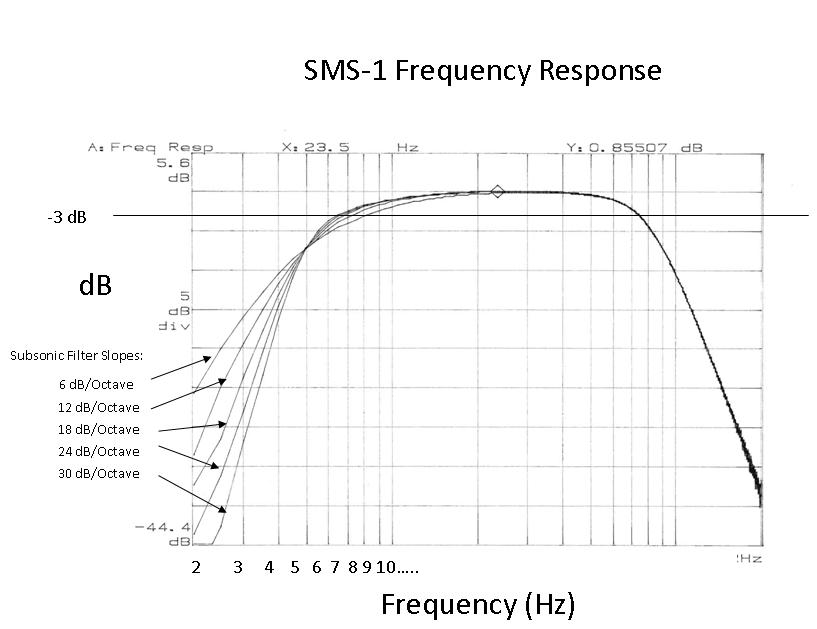|
|
jessie.dazzle


Paris, France
Posts 456
Joined on 04-23-2006
|
Post #:
|
37
|
|
Post ID:
|
14959
|
|
Reply to:
|
14953
|
|
|
|
10" array; how low? & SMS-1 distortion
|




|
|
|
|
|
fiogf49gjkf0d
Regarding combined driver diaphragm area for ULF:
Romy wrote:
"...I disagree that using a bunch of 10" drivers is some kind of compromised in way. The six 10” drivers give me a surface of 2.3 18” drivers..."
I recognize the relative and important advantages to be had when using smaller drivers in multiples instead of a single pair of larger drivers. However, moving down in frequency, there is a point where it no longer makes sense... It depends how low you are asking them to go.
You are not asking of your arrays anything so extreme, but for purposes of illustration, look at the extreme: 97 tweeters might also give you the surface area of 2 x 18" drivers, but would you expect to get LF from them?
Below a certain frequency the advantages become a handicap. At that point (if you were using its EQ capabilities), the SMS -1 would start to step in... Whether you reach that point with your 10" arrays depends on how low you are asking them to go, and whether that entails a compromise or not depends on how destructive the SMS-1 might be. I don't know where that point is, but I'd guess at around 30Hz a pair of 18" drivers starts to make more sense.
SMS-1 Distortion & Bottom end roll-off:
Yes, this little issue caused all the AV boyz to panic and the value of the SMS-1 to plummet; they can now be had for under $400.
From what I remember, the distortion problem was the result of the device not being able to digest the higher output voltages typical of high-end home theater oriented "receivers"; a condition caused by the software the SMS-1 ran at the time.
In late 2007, the distortion issue was addressed by firmware update 2.1.3... There has since been one more update.
Do a search today on "SMS-1 Distortion" "THD" and you'll find mostly postings that date from the pre firmware 2.1.3 period.
Also resolved was the issue regarding the quicker-than-desired roll off at the bottom end (the "sub-sonic filter").
Here are the release notes from Velodyne dating from November 2007, when they first acknowledged the problems:
Subwoofer Management System (SMS-1) Release 2.1.3
Release Notes
This document discusses the latest release of Velodyne’s Subwoofer Management System (SMS) firmware – release 2.1.3. This firmware addresses two issues related to the low frequency management of the SMS. First, it allows the subsonic filter to be set low enough that the only remaining rolloff in the low frequency is restricted only by the hardware, and secondly, corrects some distortion that previous versions of the firmware introduced to the audio spectrum.
Figure 1: SMS-1 Frequency Response
Please refer to Figure one. This graph shows actual output from the SMS-1 with the subsonic filter set to 5 Hz. The various curves shown reflect the subsonic filter as set to 6, 12, 18, 24, and 30 dB/octave -- the steeper the slope, the higher the subsonic slope setting. As you can see, the actual point at which the curves converge is 5 Hz, and at 5 Hz, the audio frequency is down about 5 dB. The typical 3 dB down point is about 8 Hz. This point is a limitation in the hardware and the low frequency response of the SMS cannot be extended any further without changing components in the hardware. In release 2.1.3 the subsonic filter can be set as low as 1 Hz., but any setting below 5 Hz. has negligible effect on the frequency response.

Note that the low-pass crossover in this example is set to the default of 80 Hz and 24 dB/octave.
Some users of the SMS measured the low frequency performance and discovered that the SMS was adding some distortion to the lowest frequencies. Most users did not notice this added distortion due to the low frequencies affected. The distortion was inadvertently introduced as the frequency processing software, which was based on Digital Drive subwoofers, was rewritten for the SMS. The 2.1.3 firmware corrects this problem.
There was some confusion that this distortion was also present in the DD series. This is not and was never true – the distortion was introduced in the SMS only, and has now been remedied.
If you have any questions on this information, please contact Velodyne customer service at techhelp@velodyne.com."
Make sure you've got the latest firmware update; requires a USB to RS232 cable or adaptor + USB cable.
http://www.diytrade.com/china/4/products/2031651/USB-RS232.html
jd*
Technical issue with the Goodsoundclub site:
Posting with bold or colored text will only "stick" after third edit.
How to short-circuit evolution: Enshrine mediocrity.
|
|
|